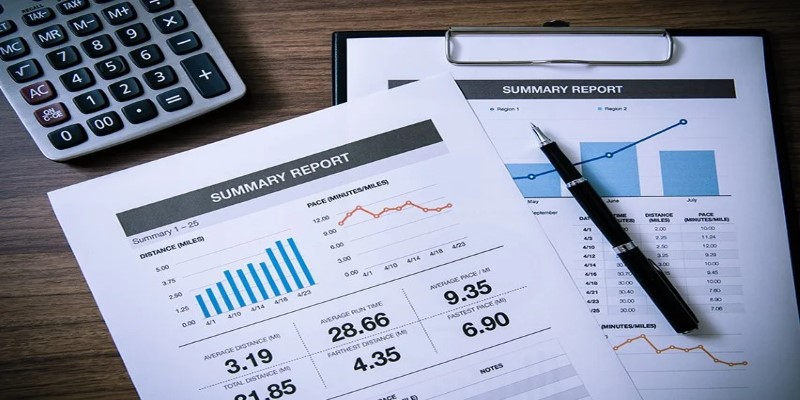Understanding Return on Equity: A Simple Guide to Calculating and Using ROE
Advertisement
One of the most useful financial measures that can be used to measure how profitable and efficient a company is is the return on equity (ROE). It really helps at every level, whether you're an aspiring investor or a seasoned finance professional, to understand the underlying perspective behind the surface numbers of a company's performance. ROE doesn't just tell you how much profit a company generates but how well it can make use of its shareholders' investments.

In this guide, we’ll explore how ROE is calculated, why it matters, and how it serves as a valuable lens for evaluating a company's financial health. By the end, you’ll have a clear, practical understanding of how to interpret ROE and use it effectively in your financial analysis.
What is Return on Equity?
Return on Equity, at its roots, basically measures the company's effectiveness in generating profit from shareholders' equity. It tells the shareholder whether his business is a good steward of resources. ROE is always expressed as a percentage, and the formula is simple:
ROE = (Net Income×100)/ Shareholders' Equity
A higher ROE typically means that the company is better managed and generates extraordinary returns on its equity. But the numbers are just a small part of the story. ROE is a good place to start, but interpreting it requires more than just an understanding of its context.
Why Does ROE Matter?
ROE is more than just a number—it’s a window into how a company operates and thrives. For investors, it answers a crucial question: Is this company making good use of my money?
One of the biggest advantages of ROE is its ability to offer insights into a company's profitability without requiring deep dives into complex reports. If a company’s ROE is consistently high, it often suggests a competitive edge in its industry or excellent management practices.
For businesses themselves, ROE serves as an internal benchmark. It shows whether their strategies are working and if they’re creating value for shareholders. In competitive industries, maintaining a strong ROE can be critical to staying ahead.
However, it’s important to use ROE in conjunction with other metrics. A sky-high ROE might look appealing but could be inflated by factors like excessive debt. Similarly, a low ROE doesn’t automatically mean a company is underperforming—it might just be in a phase of reinvestment.
How to Calculate ROE Step-by-Step?
Calculating ROE is as simple as plugging numbers into the formula, but understanding each component makes the process even clearer.
Find the Net Income: This figure is typically listed on the company's income statement. It represents the total earnings after all expenses, taxes, and costs have been subtracted.
Locate Shareholders' Equity: Found on the balance sheet, this value includes common stock, retained earnings, and sometimes preferred stock. It essentially represents the amount shareholders would receive if the company liquidated all its assets and paid off its debts.

Perform the Calculation: Divide the net income by shareholders' equity and multiply the result by 100 to get the percentage.
For instance, if a company has a net income of $1 million and shareholders' equity of $5 million:
ROE = (1,000,000/5,000,000)×100 = 20%
This means the company generates a 20% return on every dollar of equity.
Using ROE for Evaluating a Company
Compare Against Industry Averages
Each industry has its benchmarks for what constitutes a strong ROE. A tech company might have a higher average ROE compared to a utility firm because of differences in capital intensity. For instance, industries with low capital requirements, such as software, often show higher ROE figures due to their ability to scale without significant asset investment. Understanding these variations helps investors identify whether a company's ROE is genuinely competitive or simply reflective of industry norms.
Analyze Over Time
A single year’s ROE might not paint the full picture. Look at the company’s ROE trends over several years to see if it’s improving, declining, or remaining steady. Consistent improvement signals sound business decisions and effective resource allocation. Conversely, a declining ROE could indicate deteriorating profitability, poor management, or excessive dilution of equity. Long-term trend analysis ensures you are not misled by temporary fluctuations or one-off gains.
Consider the Debt Factor

Companies often use borrowed money to boost their ROE. While this can lead to higher returns, it also increases risk. A high ROE with minimal debt is generally a sign of a robust business model. Conversely, a company with significant debt might appear efficient but could be over-leveraged, leaving it vulnerable to financial instability. To mitigate this risk, scrutinize the company's debt-to-equity ratio alongside its ROE. A balanced evaluation will reveal whether the ROE is genuinely reflective of operational efficiency or artificially inflated by leverage.
Combine with Other Metrics
ROE shouldn’t be viewed in isolation. Pair it with metrics like return on assets (ROA), return on investment (ROI), or debt-to-equity ratio to gain a holistic understanding of the company's performance. For example, a high ROE but a low ROA may indicate heavy reliance on leverage rather than operational efficiency. Additionally, earnings growth and profit margins should be considered to see how well the company is converting its equity into sustainable growth.
Conclusion
Return on Equity (ROE) isn’t just a number—it’s a key to unlocking a company’s financial story. By understanding how well a company uses its shareholders' investments to generate profit, you gain valuable insight into its efficiency, profitability, and overall health. However, ROE is most effective when used thoughtfully. By considering industry context, debt levels, and other financial metrics, you can avoid common pitfalls and make more informed decisions. Whether you're evaluating a potential investment or simply curious about what makes a company tick, ROE is a practical and powerful tool in your financial toolkit.
Advertisement












